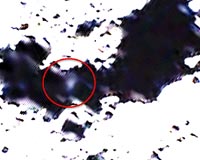 |
Moffett Field CA (SPX) Oct 20, 2009 Nineteen teams pushed their robot competitors to the limit, and three teams claimed a total of $750,000 in NASA prizes at this year's Regolith Excavation Challenge on Oct. 18. This is the first time in the competition's three-year history that any team qualified for a cash prize, the largest NASA has awarded to date. After two days of intense competition hosted at NASA's Ames Research Center at Moffett Field, Calif., organizers conferred first place prize of $500,000 to Paul's Robotics of Worcester, Mass. Terra Engineering of Gardena, Calif., was a three-time returning competitor and was awarded second place prize of $150,000, and Team Braundo of Rancho Palos Verde, Calif., took the third place of $100,000 as a first-time competitor. Competitors were required to use mobile, robotic digging machines capable of excavating at least 330 pounds of simulated moon dirt, known as regolith, and depositing it into a container in 30 minutes or less. The rules required the remotely controlled vehicles to contain their own power sources and weigh no more than 176 pounds. The winning excavator lifted 1,103 pounds within the allotted time. Runners-up excavated 595 pounds and 580 pounds, respectively. Team E-REX of Little Rock, Ark., earned a special mention for transferring the most regolith in a single deposit - 165 pounds. "It's really encouraging that we saw three teams achieve the minimum requirements and shows that innovation is not only alive but growing," said Lynn Baroff, executive director of the California Space Education and Workforce Institute, who lead the panel of judges. "It's really great that through this competition NASA is actively seeking to recognize citizen inventors from across the nation whose ideas may one day contribute to space exploration." Regolith is difficult to dig because its dust particles want to stick together. Judges recognized the winning teams achieved real technical accomplishments because the whole robotic system has to be sturdy enough to scoop moon dirt and powerful enough to move through the dust while still meeting the weight requirements. "This was an incredibly tough competition, and teams came up with fantastic ideas, some of which might find use in future missions to the moon," said Greg Schmidt, deputy director of the NASA Lunar Science Institute at Ames. "It's great to have a winner this year. The biggest win is getting so many talented young people involved in NASA's mission of exploration." "After three years, it's great to have three cash prize winners," said Andrea Seastrand, executive director at California Space Authority Inc. of Santa Maria. "Two of the winning teams were returning competitors and have learned through this challenge that there is no such thing as failure. It's great to see them rewarded for their determination, innovation and creativity." The Centennial Challenges program in NASA's Innovative Partnerships Program Office sponsors the Regolith Excavation Challenge. The competition was co-hosted by the California Space Education and Workforce Institute and its sister organization the California Space Authority, in collaboration with the NASA Lunar Science Institute. Diani Building Corp. of Santa Maria, Calif., and Empirical Systems Aerospace, Pismo Beach, Calif., also supported the competition. Share This Article With Planet Earth
Related Links Watch videos, view images and get more information about the Regolith Excavation Challenge NASA's Centennial Challenges Mars News and Information at MarsDaily.com Lunar Dreams and more
 NASA'S LCROSS Captures All Phases Of Centaur Impact
NASA'S LCROSS Captures All Phases Of Centaur Impactby Staff Writers NASA's Lunar CRater Observation and Sensing Satellite (LCROSS) was a smashing success, returning tantalizing data about the Centaur impact before the spacecraft itself impacted the surface of the moon. Last week, plunging headlong into Cabeus crater, the nine LCROSS instruments successfully captured each phase of the impact sequence: the impact flash ... read more |
|
| The content herein, unless otherwise known to be public domain, are Copyright 1995-2009 - SpaceDaily. AFP and UPI Wire Stories are copyright Agence France-Presse and United Press International. ESA Portal Reports are copyright European Space Agency. All NASA sourced material is public domain. Additional copyrights may apply in whole or part to other bona fide parties. Advertising does not imply endorsement,agreement or approval of any opinions, statements or information provided by SpaceDaily on any Web page published or hosted by SpaceDaily. Privacy Statement |